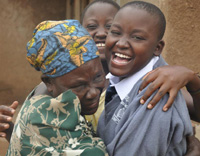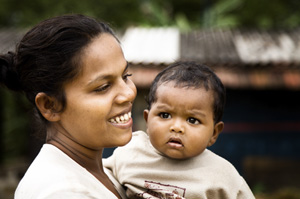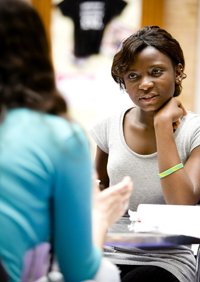 The callous killing of George Floyd in Minneapolis on May 25 by a uniformed police officer while on duty and while being filmed by bystanders was arguably the most brazen act of police brutality involving an unarmed Black civilian since the Black Lives Matter movement began. What this act demonstrated was that those who are hell-bent on asserting white supremacy and upholding its racist regime are now afraid of nothing and outside the moral community.
The callous killing of George Floyd in Minneapolis on May 25 by a uniformed police officer while on duty and while being filmed by bystanders was arguably the most brazen act of police brutality involving an unarmed Black civilian since the Black Lives Matter movement began. What this act demonstrated was that those who are hell-bent on asserting white supremacy and upholding its racist regime are now afraid of nothing and outside the moral community.
The mass demonstrations calling for justice and the widespread expressions of solidarity with Black people and racial equality that have erupted in recent days show clearly that the balance of public opinion and power is shifting towards a multiracial coalition of people who embrace the oneness of humanity as well as the end of racial prejudice and racial inequality. In the long run, racial equality will prevail because it is the truth about human beings, but, at this moment, we are collectively in agony about a shameless, heartless, evil act of race-based assassination.
The protests that are growing day by day are the collective expression of the frustration, pain, fury, and indignation of those who have waited so long and so patiently for the truth of Black people’s equality to be enshrined not only in the law and the practices and policies of those who enforce it, but also in the hearts and minds of their fellow human beings. The enforced, racialized power asymmetries in virtually every sphere of life — political, economic, educational, medical, environmental, and so on — recreate an uphill battle each and every day for every Black person, every other person of color, and every ally of Black people and other people of color, ensuring that the rhythm of social justice efforts is always two steps forward and one step back, if not one step forward and two steps back.
Only when those whose hearts and minds are thoroughly suffused with the reality of racial equality are both in the numerical majority and in positions of influence and power will things begin to shift towards closure on this spiritual disease of racism. Fortunately, what the recent uprisings have shown us is that we are getting there. That people like George Floyd (and Breonna Taylor, and Ahmaud Arbery, not to mention the string of their predecessors, not to mention the disproportionate number of Black lives lost to COVID-19, not to mention everybody since 1619) should die to get us there, however, is unconscionable.
As a womanist social movement theorist and also a trained psychologist, my mind turns to the methodologies we are employing to move the needle on racism and an analysis of the kinds of actions we are taking to eradicate the white supremacy, structural racism, racial prejudice, and racist violence we all deplore. I am concerned that we need to be more creative, innovative, and — yes — evidence-based in our social change approaches. We now have the benefit of a century of social scientific research about intergroup relations, as well as decades of neuroscience research, for example, on implicit bias, that helps us understand what works and what doesn’t work, but I’m not sure we are carefully deploying it in our creation of strategies to end racism and its correlates.
Additionally, we have the benefit of dynamic systems theories of varying kinds (a favorite of mine is Bronfenbrenner’s ecological systems theory) that allow us to map how everything from individuals to families, communities, and entire cultures generate, shape, embed, and sustain things like racism — and which enable us to locate effective points of intervention. We also now have such enormous troves of big data that we could answer questions about human behavior and attitudes in real time and at a scale previously impossible. We could and should take a much more research-informed approach to ending racism, and I am glad that this is something we stand for and work towards at the Wellesley Centers for Women.
I am also concerned that we have a social change means-ends problem that we need to scrutinize more closely. Understandably, many social movements begin with emotion-driven, fist-in-the-air protests that are good for mobilizing people and publicizing issues, yet we must remember that the fist is a bellicose symbol inconsistent with peace and harmony — aims that most protesters cherish. The pursuit of justice requires that protests be followed up by the long-form, in-the-trenches work that actually effects structural change, making sustainable peace and justice possible.
Furthermore, new emotional foundations are required to create and sustain a more peaceful and just society. There is already too much pain and trauma in this world because we keep justifying all of the ways that we hurt each other, and all this pain just becomes a factory for hate and violence, both interpersonal and structural.
As a womanist, I would argue that, when we meet epithets with epithets or rage with rage, we are energetically reproducing the conditions we wish to eliminate. We must instead devise new transformational methods that enable us to dig into the spiritual well of goodness that resides within all of us to generate higher-vibrating, more positive and elevating emotional states and belief patterns, and that bring people together socially and relationally in a common space of love, respect, encouragement, enthusiasm, and esprit de corps. This is a tall order, but it is, I believe, what is really needed now.
As I watch the demonstrations on TV, I often find myself thinking, “If I were to make a placard for all the world to see — a placard to catalyze change — what would mine say?” I realized that mine would say “Everyone is sacred.” In times like these, I believe we need a reminder that our fundamental essence is that of Light — our innate divinity and the star-stuff we are all made of — and that everything else, good or bad, is overlay (and changeable).
We cannot continue this regime of oppositionality, in which we perpetually create divides, pit the divided against each other, and struggle to vanquish those who are not us. This regime will never lead to unity, peace, or justice. In the deepest recesses of our souls, we know this, but our politics, practices, and habits of thought have not caught up. The small reminder that everyone is sacred potentially places us on a course towards transformation, and that transformation is my reason for being and the impetus behind all of my work.
What fuels you? And what would your placard say? We would love to hear from you, because now is not the time to be silent. Rather, it is the time to recreate the world.
Layli Maparyan, Ph.D., is the Katherine Stone Kaufmann ’67 Executive Director of the Wellesley Centers for Women at Wellesley College.


 This landscape is familiar, strewn with ash and blood. We’ve been here before, too often, seeking the living, counting our dead. I know the terrain, can pick my way stumbling over the bodies, the stench of fear and hatred lingering in the air; the thoughts and prayers; the headlines and statistics.
This landscape is familiar, strewn with ash and blood. We’ve been here before, too often, seeking the living, counting our dead. I know the terrain, can pick my way stumbling over the bodies, the stench of fear and hatred lingering in the air; the thoughts and prayers; the headlines and statistics. At the Wellesley Centers for Women, we envision a world of justice, peace, and wellbeing for women and girls, children and youth, families and communities, in all their diversity around the world. Like so many, our will and spirits have been tested by recent events, but our resolve has been strengthened. The fatal shooting of two African Americans in a Jeffersontown, Kentucky, grocery store; the more than a dozen pipe bombs sent to CNN and prominent progressive political leaders and supporters across the country; and the mass shooting of eleven worshippers at the Tree of Life Synagogue in Pittsburgh, Pennsylvania, are evidence that we need to stand strong and work together—to provide comfort, hope, knowledge, and power — to help shape a better world. We at WCW stand with those whose lives are forever changed. Only when social equity and equality, psychological wellbeing, peace, and freedom from violence and want evince for all people will our work have reached its true aim.
At the Wellesley Centers for Women, we envision a world of justice, peace, and wellbeing for women and girls, children and youth, families and communities, in all their diversity around the world. Like so many, our will and spirits have been tested by recent events, but our resolve has been strengthened. The fatal shooting of two African Americans in a Jeffersontown, Kentucky, grocery store; the more than a dozen pipe bombs sent to CNN and prominent progressive political leaders and supporters across the country; and the mass shooting of eleven worshippers at the Tree of Life Synagogue in Pittsburgh, Pennsylvania, are evidence that we need to stand strong and work together—to provide comfort, hope, knowledge, and power — to help shape a better world. We at WCW stand with those whose lives are forever changed. Only when social equity and equality, psychological wellbeing, peace, and freedom from violence and want evince for all people will our work have reached its true aim.
 At the
At the  Yet just because women weren’t holding high-profile leadership positions on campus didn’t mean that they weren’t contributing to campus life. The committee also found that women were more likely to “hold behind-the-scenes positions or seek to make a difference outside of elected office in campus groups.” Women at Princeton, for example, were often engaged in cause-based issues, like spearheading campaigns to institute recycling across campus.
Yet just because women weren’t holding high-profile leadership positions on campus didn’t mean that they weren’t contributing to campus life. The committee also found that women were more likely to “hold behind-the-scenes positions or seek to make a difference outside of elected office in campus groups.” Women at Princeton, for example, were often engaged in cause-based issues, like spearheading campaigns to institute recycling across campus. Second, the PPLA explores ways to do teaching and research that is driven by our values. We focus on the kinds of leadership and collective capacity we need to meet the common challenges our society face in a just way. We insist upon rigor and methodological soundness in our work, but we cannot separate moral and ethical considerations from our research and writing. Many scholars believe that our values suffuse our classrooms, laboratories, articles, and books whether we recognize and foreground them or not. The Project on Public Leadership seeks ways to affirm and support explicitly values-driven work.
Second, the PPLA explores ways to do teaching and research that is driven by our values. We focus on the kinds of leadership and collective capacity we need to meet the common challenges our society face in a just way. We insist upon rigor and methodological soundness in our work, but we cannot separate moral and ethical considerations from our research and writing. Many scholars believe that our values suffuse our classrooms, laboratories, articles, and books whether we recognize and foreground them or not. The Project on Public Leadership seeks ways to affirm and support explicitly values-driven work. Social Justice Dialogue: Eradicating Poverty
Social Justice Dialogue: Eradicating Poverty I was fortunate, however, that my parents were not desperate for the bride price when I was a growing up. I could have been sold for a cow or a goat. Instead, at age 14, when I was feeling hopeless and working as a barmaid, a wonderful family in Kentucky (who knew one of my cousins from when they had done missionary work years earlier) enabled my return to school by paying my school fees for five years. I went on to earn my college degree before working with organizations that were striving to improve the lives of poor families in Africa.
I was fortunate, however, that my parents were not desperate for the bride price when I was a growing up. I could have been sold for a cow or a goat. Instead, at age 14, when I was feeling hopeless and working as a barmaid, a wonderful family in Kentucky (who knew one of my cousins from when they had done missionary work years earlier) enabled my return to school by paying my school fees for five years. I went on to earn my college degree before working with organizations that were striving to improve the lives of poor families in Africa.
 The inadequacy of full-time, year-round minimum wage earnings to support a family. In 2009, single mothers earning the hourly minimum wage of $7.25 earned just over $15,000--well below the poverty level of $17,285 for a family of three. These earnings are far below the median U.S. family income (almost $50,000) and the median earnings of dual earning households (over $78,000).
The inadequacy of full-time, year-round minimum wage earnings to support a family. In 2009, single mothers earning the hourly minimum wage of $7.25 earned just over $15,000--well below the poverty level of $17,285 for a family of three. These earnings are far below the median U.S. family income (almost $50,000) and the median earnings of dual earning households (over $78,000). Social Justice Dialogue:
Social Justice Dialogue:  Eric Bettinger and his colleagues
Eric Bettinger and his colleagues
